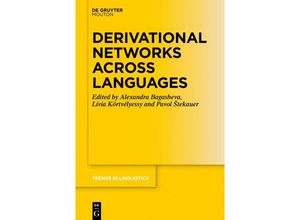This pioneering research brings a new insight into derivational processes in terms of theory
method and typology. Theoretically it conceives of derivation as a three-dimensional system.
Methodologically it introduces a range of parameters for the evaluation of derivational
networks including the derivational role combinability and blocking effects of semantic
categories the maximum derivational potential and its actualization in relation to simple
underived words and the maximum and average number of orders of derivation. Each
language-specific chapter has a unified structure which made it possible to identify - in the
final typologically oriented chapter - the systematicity and regularity in developing
derivational networks in a sample of forty European languages and in a few language genera and
families. This is supported by considerations about the role of word-classes morphological
types and the differences and similarities between word-formation processes of the languages
belonging to the same genus family.



